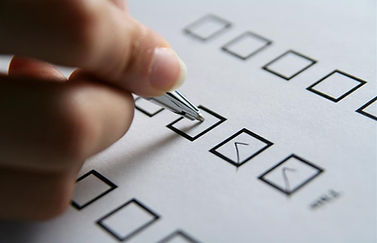Kristen Heaton
Fall 2017- Design Three/Capstone Semester One
In the first eight weeks of my engineering design class, students were sorted into different capstone projects after introductions and interviews held by capstone advisors. I chose this project as my first choice because of my desire to impact a local client and to learn more about mechanical engineering and fabrication concepts. In this semester, I worked on a team with three other people to get to know our client, MAAP Coffee and it's owner Michael Scrogham. As part of this team, I set agendas for each team meeting and was the liaison between the team and our client. This semester consisted of learning through coffee roasting experiments done as a team, defining system requirements via creating a process diagram, reviewing pertinent codes and standards, and conducting interviews with those who use existing commercial coffee roasters such as a Diedrich IR-5 and Ambex YM-5.
Client Interviews


Upon being selected to be a member of the small batch coffee roasting capstone, my team and I got to know our client, MAAP Coffee and its owner and operator, Michael Scrogham. As part of his shop, the proceeds go towards funding Madison Automotive Apprentices, a Harrisonburg non-profit that educates local students in automobile restoration and service. To represent the relationship we have as students to the coffee shop, I made the logo in the image on the right to display the purple and gold colors of James Madison University and the tools to show of what we hope to build and accomplish.


The following are two pictures of MAAP Coffee and two of my team members, Madison and Zack, learning how Michael brews and makes various drinks offered by the shop's menu.
Coffee Roasting Learning Experiments




The following series are pictures of two different coffee roasting learning experiments done with beans from Poços de Caldas, Brazil by the team to learn of the basic elements of roasting coffee- a consistent, high heat source, a cooking implement, agitation of the beans, and a bean cooler. The column at left used a cooking skillet over a high heat electric stove element. This method had members shaking the skillet over the stove, which was a physically intensive process that provided the team with a light roast which was slightly unpalatable. The column at right used a popcorn cooker also over a high heat electric stove element, wherein members were stirring using the crank and shaking the cooker every few turns to ensure that the beans could all get roasted. This roast tasted better than the first roast we did with the skillet and was a rewarding learning and bonding experience.
Expert Interviews

Ambex YM-5 Coffee Roaster, Caffee Amouri Vienna, Virginia

Diedrich IR-12, Central Coffee Company
Sperryville, Virginia
The following two pictures are commercial coffee roasting machines that the team had the opportunity to look over while interviewing the master roasters that use them. In October, Zack, Caleb, and I went to visit Caffe Amouri to attend a class on coffee roasting. After this, the owner of the shop, Michael, and the master roaster, Nicki, gave us an overview of their Ambex roaster, shown in the image at left. In November, I had the opportunity to interview Jessie of Central Coffee Company in Sperryville, Virginia. The time I spent there was very informative, with the opportunity for me to look at every major subsystem of a Diedrich roaster from 1982, shown in the image at right. This piece of information informed my team about, when built well, these machines last.
Codes and Standards

To build our understanding of the scope of the project, team members began to research codes and standards that were related to the coffee roasting process such as EPA and the City of Harrisonburg's ventilation codes, EN ISO emergency stop function codes, and OSHA's limits to carbon monoxide, a byproduct of the roasting process. These were just some of the codes that the team found and will be built upon in the succeeding semesters.
Process Modeling

The following diagram is the process diagram created by the team to understand the coffee roasting process. Our experiments and interviews informed this diagram heavily. After modeling this, the team learned more about the less physical components of the roaster, such as the electrical and thermal energy. To better view it, click on it for it to expand into an additional web browser tab.
The application of the engineering design process continues in my spring 2018 semester, which can be viewed here.